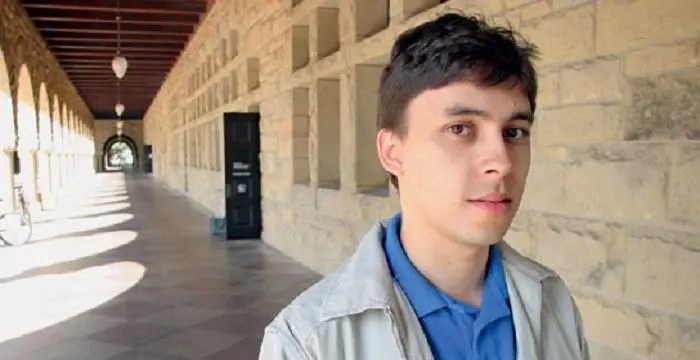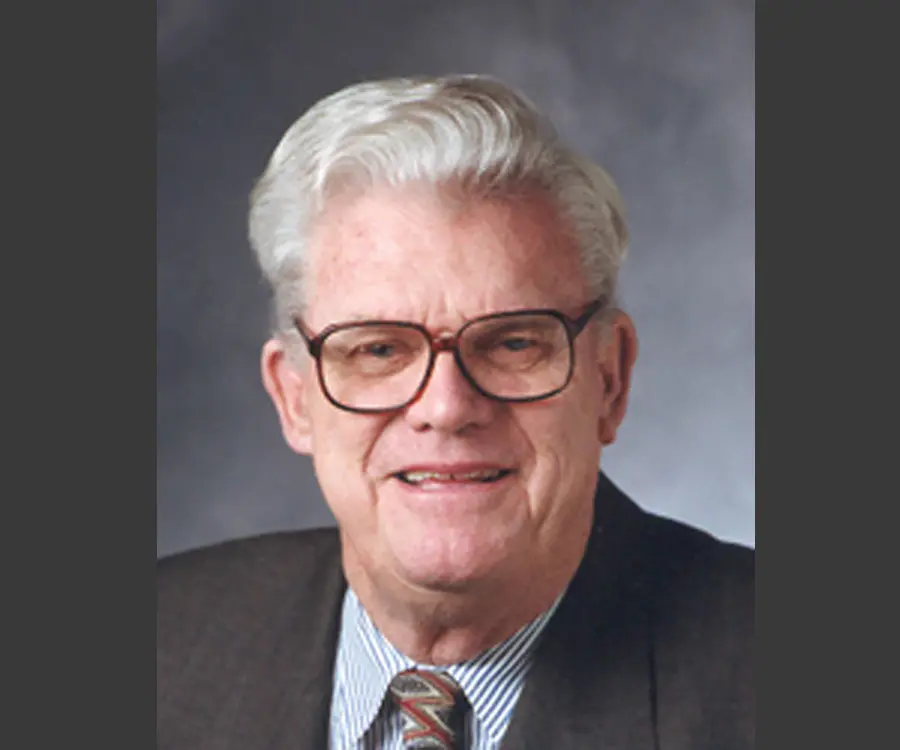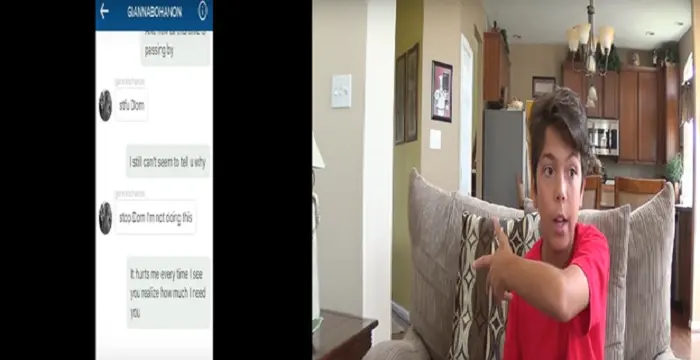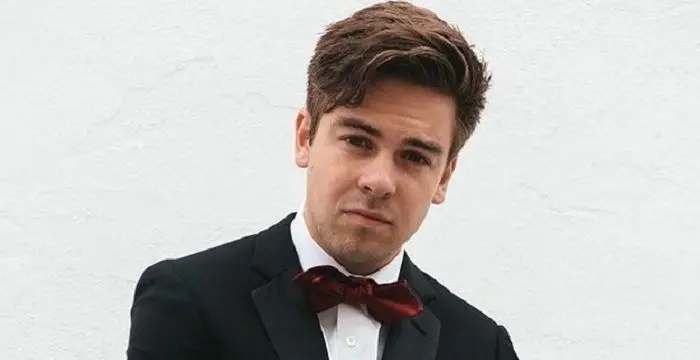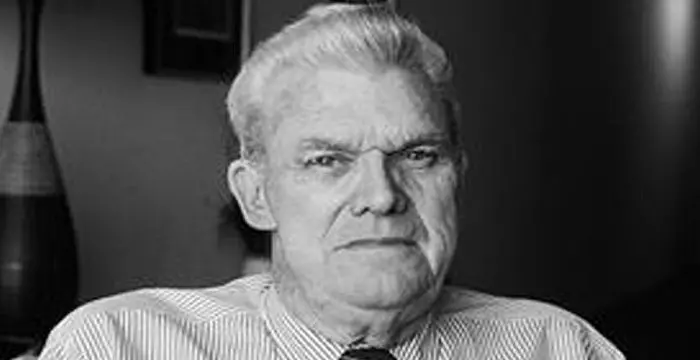
Richard E. Taylor - Stanford University, Birthday and Life
Richard E. Taylor's Personal Details
Richard Edward Taylor is a Canadian scientist who shared the Nobel Prize in Physics for discovering the quarks model
| Information | Detail |
|---|---|
| Birthday | November 2, 1929 |
| Nationality | Canadian |
| Famous | Stanford University, Scientists, Physicists |
| Spouses | Rita Bonneau |
| Known as | Richard Taylor, Richard Edward Taylor |
| Universities |
|
| Notable Alumnis |
|
| Birth Place | Medicine Hat, Alberta, Canada |
| Gender | Male |
| Sun Sign | Scorpio |
| Born in | Medicine Hat, Alberta, Canada |
| Famous as | Physicist |
// Famous Stanford University
Jawed Karim
Jawed Karim is a German-American internet entrepreneur, technologist and co-founder of the video-sharing website, YouTube. Check out this biography to know about his childhood, family, personal life, achievements, age, etc.
Andre Braugher
Andre Braugher is an American actor. Check out this biography to know about his childhood, family life, achievements and fun facts about him.
Mae Jemison
Mae Carol Jemison is a famous American astronaut who became the first African American astronaut to travel to space. To know more about her childhood, career, profile and timeline read on
Richard E. Taylor's photo
Who is Richard E. Taylor?
Richard Edward Taylor is a Canadian scientist who shared the Nobel Prize in Physics for discovering the quarks model. He grew up in Canada and studied at three different schools before going on to study at the University of Alberta, Edmonton. He was not a particularly gifted student during his school days but due to the guidance of his teachers, he developed an interest in the sciences and pursued science at university. After attaining his master’s degree from the University of Edmonton, he studied at Stanford University for his doctorate and subsequently worked there as a professor and researcher. He worked at Stanford Linear Accelerator Centre (SLAC) for many years and his experiments on quarks model took shape during the 1970s in collaboration with two other scientists. At the same time, he also went to Europe for research work and spent time in France, Germany and also at CERN in Geneva during his illustrious career as a particle physicist. Later on, he went on to become the Assistant Director of Research at SLAC.
// Famous Scientists
Juliane Koepcke
Juliane Koepcke is a German-Peruvian biologist, who was the lone survivor among the 92 passengers and crew of the ill-fated LANSA Flight 508 that crashed in the Peruvian rainforest on 24 December 1971. Know more about her life in this biography.
Henry Cavendish
Henry Cavendish was a theoretical chemist and physicist, renowned for discovery of hydrogen and calculation of the mass of earth. To know more about his childhood, profile, timeline and career read on
Konstantin Tsiolkovsky
Konstantin Tsiolkovsky was a Russian rocket scientist and a pioneer of astronautics. This biography provides detailed information about his childhood, family, personal life, career, achievements, etc.
Childhood & Early Life
Richard Edward Taylor was born in Medicine Hat, Alberta, Canada on November 2 1929. He was Northern Irish-Scottsh by descent on his father’s side.
He studied at multiple schools and according to his own admission he was not a gifted student. He attributes his early success in the sciences and mathematics to his teachers who taught him at different schools that he attended.
After graduating from high school, he enrolled at the University of Alberta, Edmonton, and his low grades in high school proved to be a hindrance in his quest for higher education. He graduated with a bachelor’s degree in 1950 and two years later got his master’s degree from the same institute.
Career
After obtaining his master’s degree from the University of Alberta, he decided to move to California and was accepted into the graduate level programme at Stanford University. He worked at the High Energy Physics Laboratory in the University and for three years from 1958 onward, he worked at Ecole Normale Superieure.
In 1962, he was awarded his doctorate by Stanford University after he completed a study on the production of pion with the help of polarised gamma rays. Subsequently he was employed by the Lawrence Berkeley Laboratory, University of California but he did not work there for long. For six years starting in 1962, he worked as a member of the staff at Stanford Linear Accelerator Centre (SLAC) and during those years his research on electron scattering experiments formed the bedrock of his career as a scientist.
In 1968, he joined SLAC as an assistant professor and two years later he was made a full professor. Three years after that he went to CERN to research for a year after winning a Guggenheim fellowship. During the time he spent at CERN, neutral currents were invented and he started working harder on the theories related to parity conservation.
Throughout his time at the SLAC during the 1970s, he collaborated with Jerome Friedman and Henry Kendall, on a series of experiments that proved beyond doubt that protons as well as neutrons in an atom are constituted by quarks. The experiments had far reaching consequences in the world of science and led to the trio winning the Nobel Prize in Physics.
He received the Alexander von Humboldt award in 1981 and for the next academic year, he got the chance to work at Deutsches Elektronen-Synchronton or DESY, located in Hamburg. After completing that stint he went back to the SLAC as Associate Director of Research and remained in the position for four years. Subsequently, he worked as a researcher at different institutes in Europe.
Major Works
His most important work revolved about the series of experiments that he conducted throughout the 1970s at SLAC with Jerome Friedman and Henry Kendall that led to the discovery of quarks in neutrons and protons. Quarks are regarded as the basis of all matter. They shared the Nobel Prize in Physics in 1990 for their work.
Awards & Achievements
He won the Alexander von Humboldt Senior Scientist award in 1981.
In 1989, he won the W.K.H. Panofsky Prize.
He shared the Nobel Prize in Physics in 1990 with Jerome Friedman and Henry Kendall.
Personal Life & Legacy
He got married to Rita Bonneau after attaining his master’s degree from the University of Alberta in 1952 but the exact date of their marriage is unknown. The couple has a son, Ted.
// Famous Physicists
Henry Cavendish
Henry Cavendish was a theoretical chemist and physicist, renowned for discovery of hydrogen and calculation of the mass of earth. To know more about his childhood, profile, timeline and career read on
Walter Kohn
Nobel Laureate Walter Kohn was an Austrian-born American theoretical chemist and physicist. Check out this biography to know about his childhood, life, achievements, works & timeline.
Nikola Tesla
Nikola Tesla was a Serbian-American inventor, best known for his development of alternating current electrical systems. This biography of Nikola Tesla provides detailed information about his childhood, life, achievements, works & timeline.
Richard E. Taylor's awards
| Year | Name | Award |
|---|---|---|
Other | ||
| 0 | Nobel Prize in Physics (1990) | |
| 0 | FRS (1997) | |
Richard E. Taylor biography timelines
- // 2nd Nov 1929Richard Edward Taylor was born in Medicine Hat, Alberta, Canada on November 2 1929. He was Northern Irish-Scottsh by descent on his father’s side.
- // 1950After graduating from high school, he enrolled at the University of Alberta, Edmonton, and his low grades in high school proved to be a hindrance in his quest for higher education. He graduated with a bachelor’s degree in 1950 and two years later got his master’s degree from the same institute.
- // 1952He got married to Rita Bonneau after attaining his master’s degree from the University of Alberta in 1952 but the exact date of their marriage is unknown. The couple has a son, Ted.
- // 1958After obtaining his master’s degree from the University of Alberta, he decided to move to California and was accepted into the graduate level programme at Stanford University. He worked at the High Energy Physics Laboratory in the University and for three years from 1958 onward, he worked at Ecole Normale Superieure.
- // 1962In 1962, he was awarded his doctorate by Stanford University after he completed a study on the production of pion with the help of polarised gamma rays. Subsequently he was employed by the Lawrence Berkeley Laboratory, University of California but he did not work there for long. For six years starting in 1962, he worked as a member of the staff at Stanford Linear Accelerator Centre (SLAC) and during those years his research on electron scattering experiments formed the bedrock of his career as a scientist.
- // 1968In 1968, he joined SLAC as an assistant professor and two years later he was made a full professor. Three years after that he went to CERN to research for a year after winning a Guggenheim fellowship. During the time he spent at CERN, neutral currents were invented and he started working harder on the theories related to parity conservation.
- // 1981He received the Alexander von Humboldt award in 1981 and for the next academic year, he got the chance to work at Deutsches Elektronen-Synchronton or DESY, located in Hamburg. After completing that stint he went back to the SLAC as Associate Director of Research and remained in the position for four years. Subsequently, he worked as a researcher at different institutes in Europe.
- // 1981He won the Alexander von Humboldt Senior Scientist award in 1981.
- // 1989In 1989, he won the W.K.H. Panofsky Prize.
- // 1990His most important work revolved about the series of experiments that he conducted throughout the 1970s at SLAC with Jerome Friedman and Henry Kendall that led to the discovery of quarks in neutrons and protons. Quarks are regarded as the basis of all matter. They shared the Nobel Prize in Physics in 1990 for their work.
- // 1990He shared the Nobel Prize in Physics in 1990 with Jerome Friedman and Henry Kendall.
// Famous Scorpio Celebrities peoples
Teddy Zois
Teddy Zois is an American Musical.ly star and social media personality. Let’s have a look at his family and personal life including age, date of birth, net worth, and fun facts.
Kyla Cole
Kyla Cole is a Slovak glamour model and former television presenter. This biography profiles her childhood, life, modeling career, achievements and timeline.
Dominic Tracy
Dominic Tracy is an American YouTube Star. Let’s take a look at his family & personal life including age, date of birth, girlfriends, net worth, and fun facts.
Paige Mackenzie Hyland
Paige Mackenzie Hyland is an American dancer, fashion model and social media personality. Let’s take a look at her family & personal life including age, birthday, net worth, boyfriends, and fun facts.
Devin Gordon
All about American Pop singer and internet celebrity Devin Gordon, including his age, birthday, family life, girlfriends, net worth, and some fun facts.
Cody Ko
Cody Ko is a Canadian Vine sensation and YouTube personality. Check out this biography to know about his childhood, family life, achievements and fun facts about him.
Richard E. Taylor's FAQ
What is Richard E. Taylor birthday?
Richard E. Taylor was born at 1929-11-02
Where is Richard E. Taylor's birth place?
Richard E. Taylor was born in Medicine Hat, Alberta, Canada
What is Richard E. Taylor nationalities?
Richard E. Taylor's nationalities is Canadian
Who is Richard E. Taylor spouses?
Richard E. Taylor's spouses is Rita Bonneau
What was Richard E. Taylor universities?
Richard E. Taylor studied at Stanford University, 1962 - Stanford University, 1952 - University of Alberta
What was Richard E. Taylor notable alumnis?
Richard E. Taylor's notable alumnis is Stanford University
What is Richard E. Taylor's sun sign?
Richard E. Taylor is Scorpio
How famous is Richard E. Taylor?
Richard E. Taylor is famouse as Physicist
